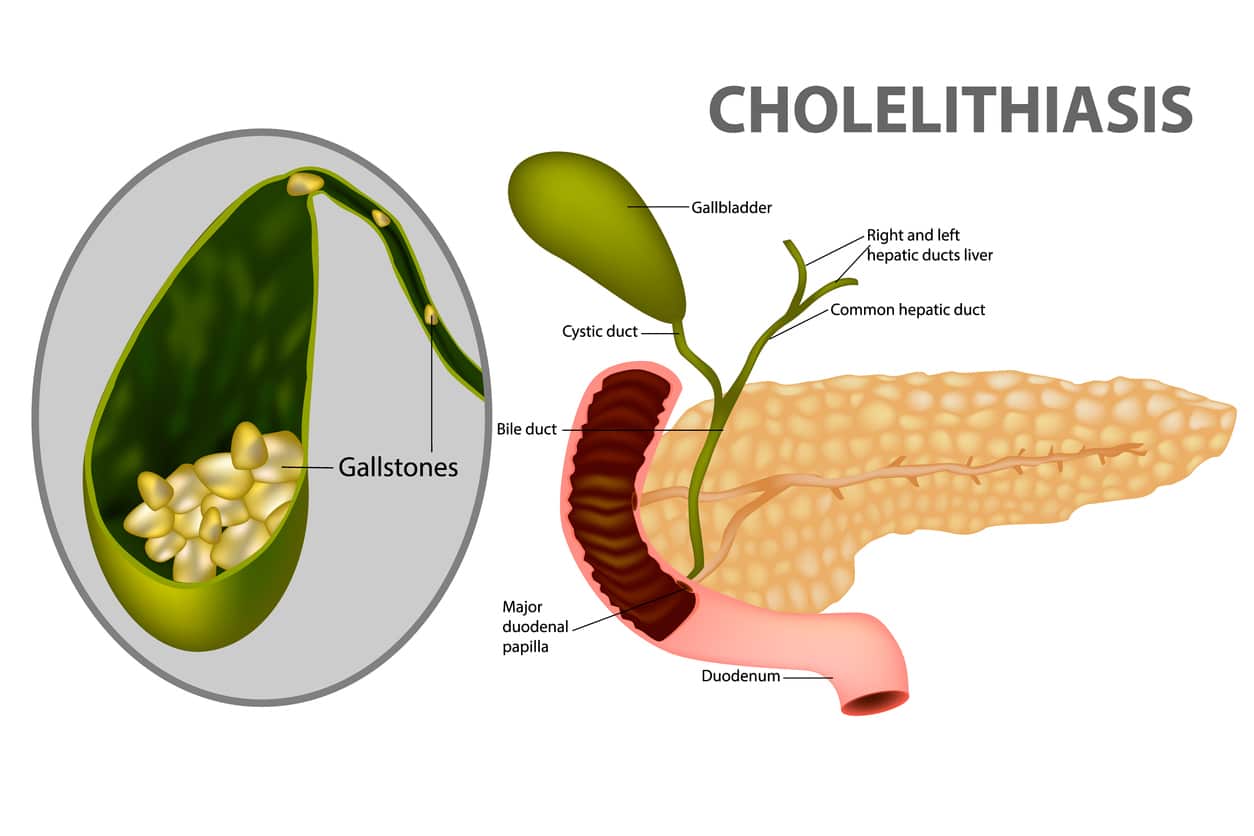
What Are Gallstones And Why Can They Cause Pain?
Gallstones (or cholelithiasis as the disease is called) are stones of varying shapes and sizes created in the gallbladder. Though there are a number of different types, cholesterol stones are the most common. A stone of any size can cause problems, though many patients who have stones may never experience any issues from them. They can block any portion of the bile ducts that excrete bile from the liver into the bowel to help absorb fats. They can block the gallbladder exit and cause cholecystitis. They can block the excretion from the main bile duct causing choledocholithiasis. They can also block the entrance to the bowel and cause pancreatitis.
How Do I Know If They Are Causing My Pain?
A discussion with your physician will help determine if gallstones are causing intermittent pain (biliary colic) or a more severe acute flare (cholecystitis). Classic symptoms include upper abdominal or right upper quadrant pain that occurs after a fatty meal and may include nausea or vomiting. This often subsides after some time. An ultrasound is the imaging study of choice to demonstrate gallstones or secondary features of the inflammation though CT scans or MRI scans may also show stones.
What Is A Laparoscopic Cholecystectomy?
Laparoscopic means minimally invasive surgery using small incisions and long instruments to perform a procedure. A laparoscopic cholecystectomy is a minimally invasive approach to removing a gallbladder. Generally, 4 incisions are made to perform this.
How Long Do I Need To Stay In The Hospital?
Most patients, especially those performed as an elective procedure, go home the same day of surgery. Occasionally, a patient may need to stay overnight in certain circumstances.
What Is The Recovery Like?
You may shower the next day. The incisions are closed with dissolveable stitches underneath the skin and either skin glue that flakes off in 2-3 weeks OR miniature band aids that fall off in 2 weeks. We recommend not lifting greater than 20 pounds for 4 weeks to prevent developing a hernia. A low-fat diet may decrease the risk of having more runny stools afterward. We recommend standard walking and daily activities even the day of surgery as tolerated. Most patients need 3-5 days to feel reasonably functional with varying degrees of ability to work.


